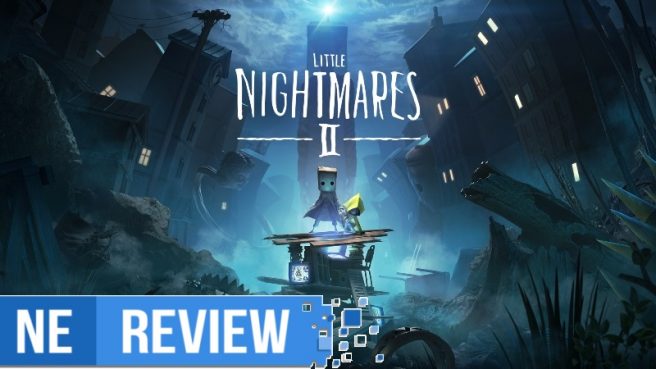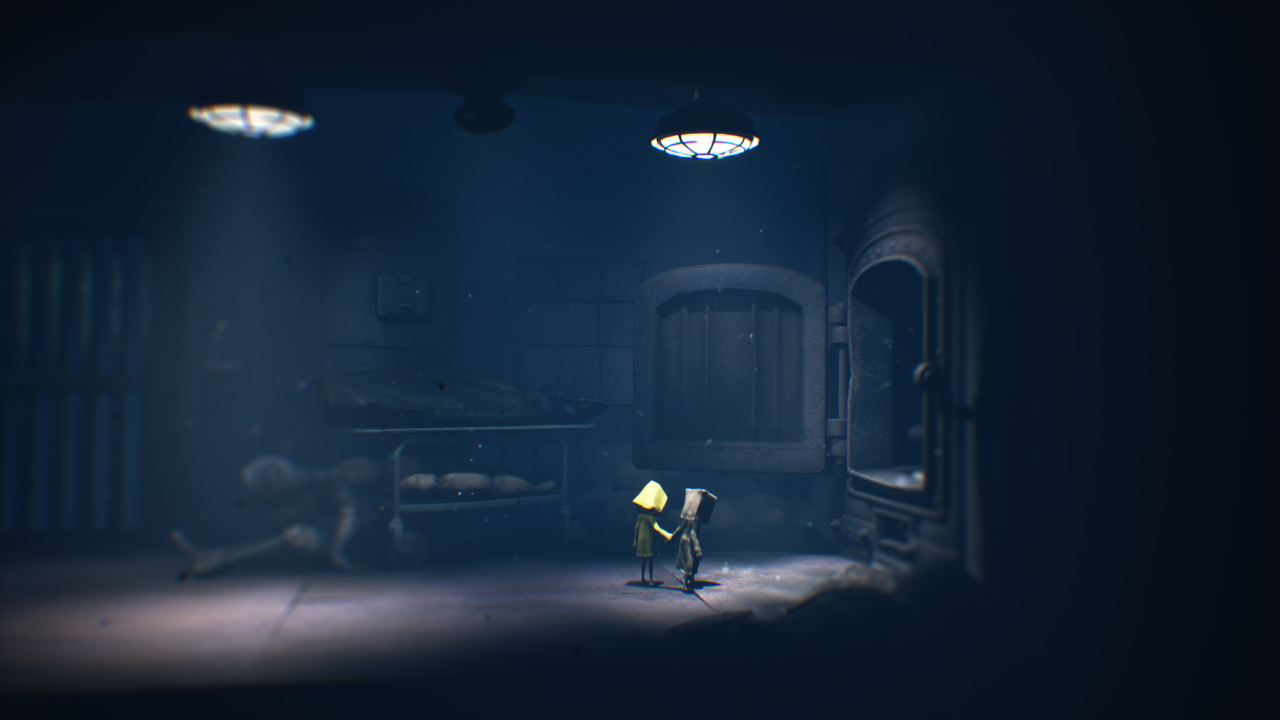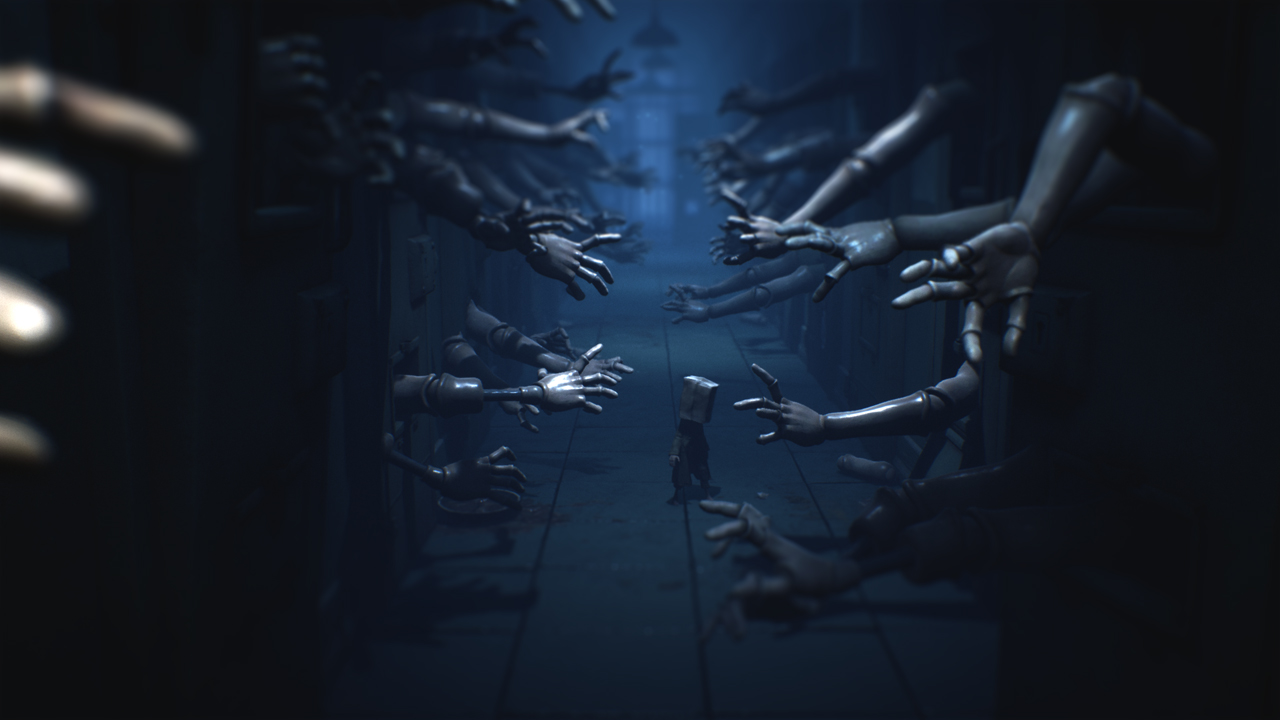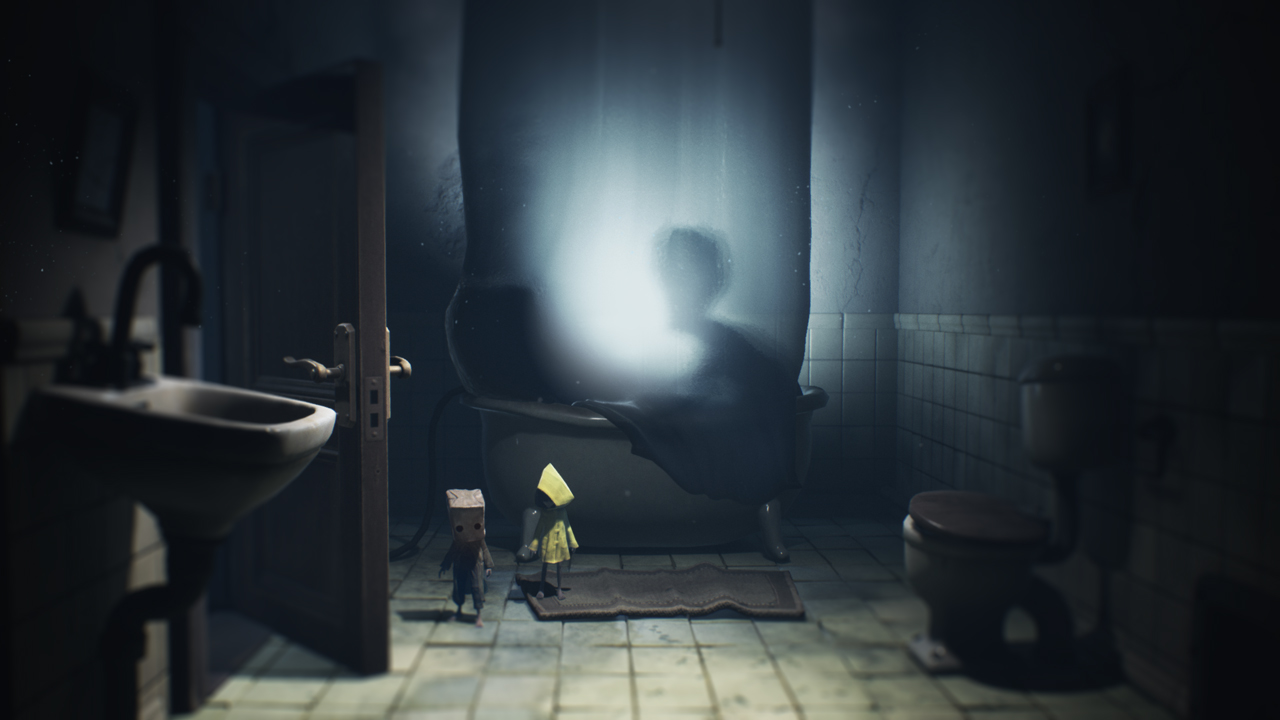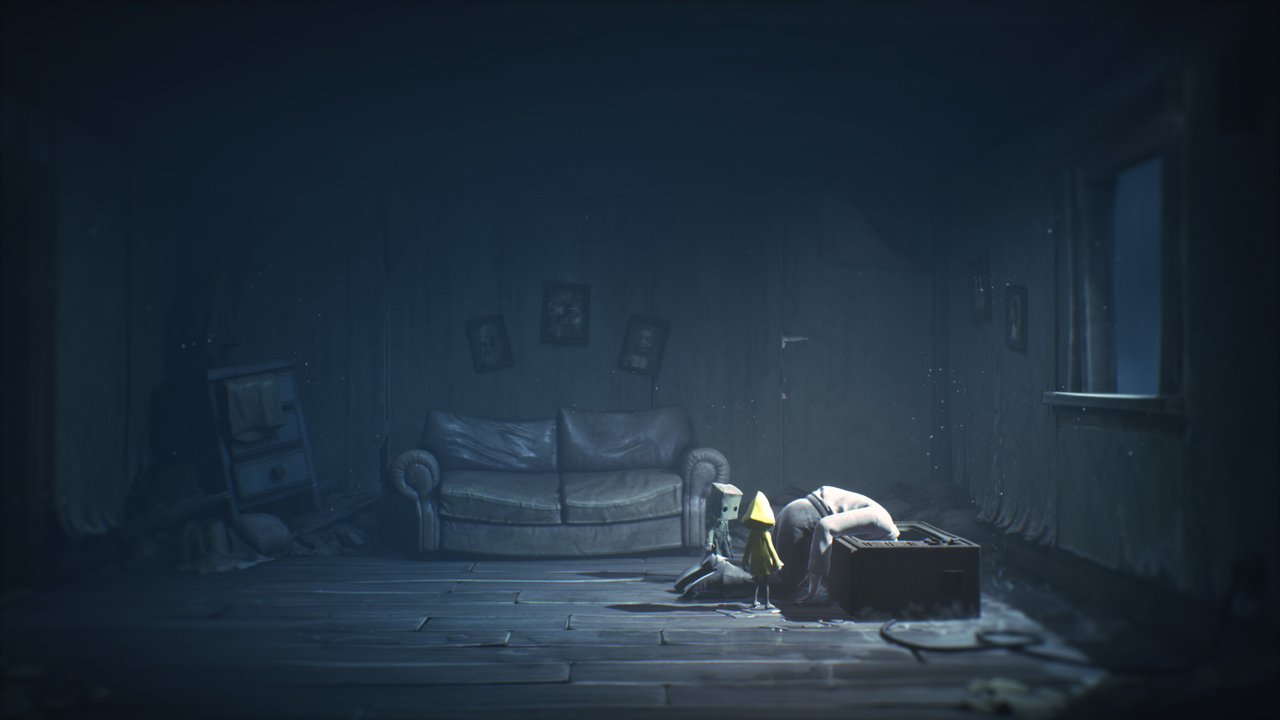[Review] Little Nightmares II
System: Switch
Release date: February 11, 2021
Developer: Tarsier Studios
Publisher: Bandai Namco
Little Nightmares quickly became a much beloved hit among fans of horror and side-scrolling adventure gameplay, beautifully melding this sense of intense atmosphere with some of the most innovative and unique environmental designs the medium has seen. It had everything it needed to be, well, nightmare fuel, and capitalized on that artistically. Its big draw-back, however, was simply how short it was. Thankfully, Tarsier Studios went on to develop DLC in a perfectly priced package that expanded the game up to three additional hours, putting us in the shoes of The Runaway Kid as they too tried to escape from The Maw. Now with the release of Little Nightmares II, feedback was taken to heart and Tarsier Studios has made a bigger and better adventure, emphasizing more so the nightmare portion of its name with a stellar experience that gives everything I wanted the first time around, and goes even further with its disturbing themes and atmosphere that, with excellent sound design, brings together a must-play horror package.
The eerie, supernatural world of Little Nightmares continues as players take control of Mono, a brown paper bag-masked boy who awakes in the middle of nowhere, trying to make sense of where he is and how to get out. As is the case with the first game, you’ll traverse a multitude of dangerous areas, sprinkled with traps, puzzles, and demented beings that are less than civilized, and in an environment that is clearly inaccessible to kids and the like. This is a place that is painted in drones made to look like a civilization, but deep down there’s a sense of brainwash that plagues those “living” within it, and, through the eyes of Mono and Six before them, can visibly see the corruption and neglect that’s deformed everyone in it. Little Nightmares, whether intentional or not, almost feels like a metaphor of sorts, with a vision that’s as pure as it is twisted thanks to an ever-evolving imagination in the mind of a child. Little Nightmares II grows on this exponentially – much like it does in every other department – making the atmosphere, tension, and immersion more palpable this time around, which is saying something as this was also the case with the first.
One of the most important aspects of good atmosphere is good sound design, and whether one is wearing headphones or not, Little Nightmares II has, hands down, one of the most impeccable audio treatments I’ve seen to date. There’s a clever craftsmanship that was put here in just about every sort of imaginable piece of environment and how it all intricately weaves into each other through every step you take from a variety of surfaces and the interactions you have with various items thrown about the world whether they’re there for puzzle purposes or simply detail. A sense of safety is rarely felt as even in the more “serene” moments, voices from another floor of a building, the bending of dilapidated structures, the humming of light fixtures, random knocks, rain pounding against windows, toys being dropped, the sound of a TV with bad signal, nursery rhymes, and so much more drown the player in an emotional rollercoaster where all you’re trying to do is swim to the top for that extra breath of fresh air before the water level rises again. It’s brilliantly crafted, and the subtle cues of the score that accentuate every environment with the melodies of music boxes and ambient pads seep under your skin, making Little Nightmares II a journey of discomfort to complement its eerie nature so it latches onto you well after you’ve finished playing for the day instead of relying on cheap jump scares.
Little Nightmares II is undoubtedly bigger in every aspect than its predecessor, and does so in a way that feels more like a genuine “hide, seek, survive” exhibition of trials through a portion of Mono’s life than the more bite-sized “snippet” of Six’s horrors. While Little Nightmares still remains mostly a side-scrolling horror puzzle mashup, having a deeper Z-axis gives a chance to explore more and appreciate more of Little Nightmare’s surroundings and environmental design, as well as the ability for more collectibles, which in this case mostly come in the form of various in-game masks you can unlock simply by playing and discovering, whereas before there were little DLCs for Six to wear. None of the masks provide any sort of effect whatsoever, and are strictly for aesthetic.
Due to the larger environments, the game naturally feels bigger and longer, much more so than Little Nightmares before it. After a recent playthrough of the previous title, I quite literally ran through the game in roughly an hour and forty five minutes, whereas my initial playthrough sat at around three hours and some change. Little Nightmares II, however, will last much longer than that, and even with a second playthrough around (or if you feel so inclined to go as fast as you can in your initial playthrough) you would still be encountering, at minimum, double that timeframe. This makes for a much more meaty experience that gave me all the Little Nightmares goodness I could have asked for and wanted the first time around, and the prospect of DLC excites me further to give the game an even grander experience. For the cost of entry being $29.99 (or $39.99 if you go the physical route on Switch), Little Nightmares II provides an immense value that’s as deep as it is detailed.
Not only did I go through Little Nightmares once again to prepare myself for Little Nightmares II, but I played the demo for Mono’s disturbed adventure on both PC and Xbox One X just to get an idea of how the Switch holds up in its visuals and technical department. Admittedly with Bandai Namco’s track record for both developed and published titles, I kept expectations low, but Tarsier Studios and Engine Software (who took care of the Switch side of things) made sure parity was as close as possible with very little sacrifices made, and areas that were tweaked had clever optimization strategies implemented to make sure the intended design was still in place with minimal compromise. There are a few caveats, but for Little Nightmares II tends to work perfectly fine, as instead of 60 frames per second or more you’ll be looking at a cap of 30, and resolution is obviously lowered slightly to accommodate for the high details, but despite this the game looks and runs great in both handheld docked modes.
My biggest issue, however, is that even with clever optimization, the game has intense film grain that, while present on other platforms, seems a lot more intense thanks to increased fog outdoors and an imbalanced brightness that can make the grainy nature of its aesthetic almost overwhelming, causing for some objects to be extremely hard to see and/or look out for. Certain traps, collectables, pathways, or items were near impossible to see in handheld mode, and in TV mode it didn’t feel much different. Settings don’t offer much in the way of turning on and off certain features, instead offering sliders to adjust audio and brightness – the rest of Little Nightmares II is simply as-is. The grain especially makes sense this time around because not only is it meant to give a more “filmic” vibe, but TVs and the sort of frequency feedback and white noise of old televisions and older electronics have a big emphasis this time around to help set a tone, but the Switch version by comparison seems to abuse this to cover up some of the shading, lighting, and draw-distance woes it has.
Another slight complaint I had is that, while the children are still small by comparison, the camera perspective being pulled back a little more this time around, at least on the Switch, didn’t make things feel as big or menacing compared to how Little Nightmares before it looked like. In the first Little Nightmares, you could not only see but feel the sheer size of the environment around you, almost looking like a “Honey, I Shrunk the Kids” perspective, but Little Nightmares II feels like it lessens the gargantuan difference to something a little more leveled, though things are still somewhat larger than expected as you’ll still find yourself jumping up to grab handles on doors and the like. Other than a bit of a hinderance from reduced visuals, however, the game itself is perfectly playable and enjoyable as it would be on any other platform.
Despite its stability, certain shortcomings not present (to my recollection) in the first Little Nightmares would tend to reveal itself throughout my playthrough – granted a lot of the time these were more my innate nature to curiously try to “break” a game as I’m always curious about environmental foundations and geometry that looks as if it could be broken. Little Nightmares II is fairly well put together in this regard, but on a few occasions I could find myself clipping through doors, falling through the world, and sending items or Mono flying due to physics manipulation. At one point while holding the hand of another with one hand, and with a flashlight in the other hand, I spun around really fast to notice the flashlight was now hovering behind us rather than in the hand it was supposed to be in. In another location, one room took a few seconds to load, and you could visually see a void leading into nothingness, before spawning a checkerboard rendering of the room, then applying a layer of textures and any associated assets designated for the room. Moving back and forth from one screen to another, you could see the room load and unload, and out of curiosity I ran into the room before it could finish loading and sure enough fell right through the world into a void before ultimately resetting the checkpoint. Severe loading was only seen in one particular area, however, and didn’t happen at any other point of the game, though frequent flashes were seen as rooms were quickly loaded in as you transition from area to area. Thankfully, whether resetting or dying, Little Nightmares II loads extremely quickly, and you won’t wait long before continuing – a matter of seconds at its absolute slowest.
Little Nightmares II is overall an improvement in every regard, including all aspects of its design. Tarsier Studios showed absolute growth from the original game and took player feedback to heart, making for a more intricate and profound experience that’s just as memorable as the first. With an evolution to the game – as well as Easter eggs tying into the previous title – Mono’s survival through his own tribulations remain as skin-crawling as the first, but choosing to overwhelm all your other senses this time around with a much more intense score, world, and sequence of moments both scripted and player-led that keep your heart racing in just about every moment. While the game is undoubtedly longer and I have no doubt some would say, to a degree, overstays its welcome, every portion of Little Nightmares II feels significant, and though it can feel like some sections drag for a bit, I almost think that’s intentional as I’m sure even in Mono’s mind he’s going “you have to be kidding me” or “that STILL didn’t do it?”. You’re a kid, not a superhero, so having those physical disadvantages are very much prevalent throughout, just as they were in the first, and in doing so increases tension like no other.
The Verdict
Little Nightmares II very much builds upon the foundation of what made Little Nightmares before it an instant classic, introducing a refreshing new take on horror and side-scrolling gameplay that went beyond what was traditional by giving players a Z-axis to roam around with. While there were some unfortunate bugs and unpolished animations that I never quite recalled being present in the original, these are just minor hiccups in what is essentially a much more refined and expanded upon version of its predecessor, excelling in almost every way as Mono escapes treacherous and disturbing humanoid creatures in supernatural environments. The Switch version holds its own rather well, with stable performance and resolution being optimal and perfectly playable, though frustration tends to kick in from time to time in both docked and handheld modes as the resolution and visual fidelity is just low enough to make certain aspects of the game difficult to see. Little Nightmares II, is, however, a definitive version of Little Nightmares before it, and for both horror and side-scrolling enthusiasts, this is another homerun work of art by Tarsier Studios.
Review copy provided by the publisher for the purposes of this review.
